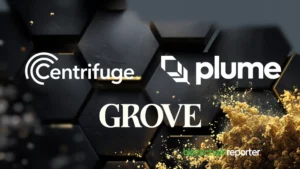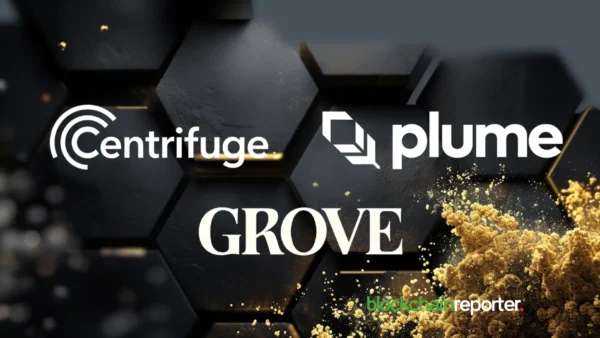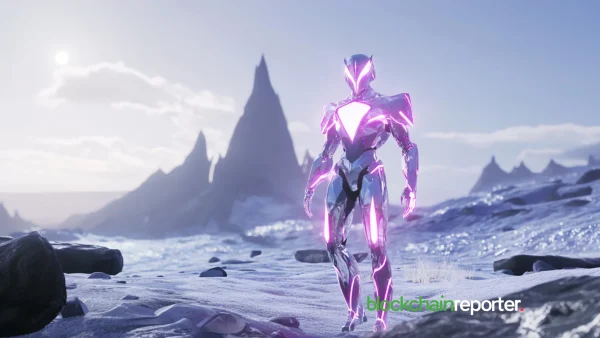
In this exclusive interview with BlockchainReporter, Kadan Stadelmann, Chief Technology Officer at Komodo, shares his journey from government cybersecurity to blockchain innovation. The discussion also explores Komodo’s commitment to security, self-custody, and its role in shaping blockchain interoperability. Kadan highlights the platform’s revolutionary approach to decentralized finance (DeFi) and atomic swaps, emphasizing the security advantages of peer-to-peer trading.
He also sheds light on Komodo’s vision for blockchain interoperability and its role in creating a more accessible blockchain ecosystem. Kadan’s insights provide a comprehensive understanding of Komodo’s mission, achievements, and future trajectory, offering readers a unique perspective on the evolving landscape of blockchain technology.

Q.1) To kick things off, could you provide a brief overview of your role as CTO and project lead at Komodo, as well as your journey in the blockchain space that led you to where you are today?
I am a seasoned blockchain developer, operations security specialist, and currently serve as the Chief Technology Officer (CTO) at Komodo Platform. My professional background encompasses operations security within the government sector, the launch of technology startups, and expertise in application development and cryptography. My involvement in blockchain technology dates back to 2011.
Raised as the son of an Austrian diplomat and an African school teacher, my fascination with technology emerged early on. I started my coding journey by developing applications before entering primary school. My academic pursuits led me to study IT and economics at universities in Germany and Vienna, where I delved into the cypherpunk world.
In a previous role, I served as a cybersecurity expert and software developer in the operations security division of the government sector. However, recognizing the transformative potential of crypto, I made the pivotal decision to leave my government position in 2014 to immerse myself in the burgeoning world of blockchain technology, led by the advent of Bitcoin.
During the nascent stages of the industry, I actively participated in prominent forums like BitcoinTalk and the subreddit r/Bitcoin, staying informed about the latest advancements. Observing the evolution of the crypto industry, I gained valuable insights into its growth. My journey with Komodo Platform started in 2016 when I joined the core developer team. I assumed the role of CTO in the subsequent year.
Q.2) Could you provide an overview of the current state of the DeFi landscape, and how you see it evolving by 2024? Additionally, considering Komodo’s progress in the DeFi space, what are your expectations for the platform’s role in shaping this space in the coming years?
The decentralized finance (DeFi) landscape is vibrant and dynamic, characterized by a diverse range of projects offering financial services without traditional intermediaries. Key components include lending, borrowing, decentralized exchanges, yield farming, and liquidity provision.
Looking ahead to 2024, I anticipate further maturation and evolution in the DeFi space. This includes improved scalability, enhanced user experience, and greater interoperability between various blockchain protocols.
Regarding Komodo’s progress in the DeFi sector, our main focus is to unite all blockchains through Komodo Wallet — a non-custodial wallet, cross-chain DEX, and crypto bridge all rolled into a single app. We already provide the widest cross-chain/cross-protocol trading support of any DEX on the market, and we’re continuously adding support for more blockchains and their respective cryptocurrencies.
We support both UTXO blockchains such as Bitcoin and Dogecoin as well as EVM blockchains like Ethereum and Avalanche. Our goal is to continuously improve the Komodo Wallet user experience by continuing to evolve along with the ever-changing DeFi sector.
Q.3) Atomic swaps have been a key focus for Komodo. How do you believe atomic swaps are revolutionizing the decentralized exchange (DEX) space, and could you provide insights into how Komodo’s approach in this area distinguishes itself from other projects, along with the advantages it offers to users?
Atomic swaps are the cornerstone of Komodo Wallet’s DEX. This technology is much different than other crypto trading solutions. It is completely peer-to-peer (P2P), meaning that traders don’t have to worry about third parties taking control of their funds or being concerned about the security of centralized liquidity pools.
As demonstrated countless times, automated market maker (AMM)-based DEXs are prone to large-scale security breaches, often centered around smart contract vulnerabilities. Especially for market makers/ liquidity providers, Komodo Wallet’s atomic swaps provide a vastly more secure alternative compared to popular AMM-based DEXs.
Q.4) Security is a paramount concern in the blockchain industry. How does Komodo contribute to making the blockchain space safer, and what measures are in place to enhance security for users and developers?
As previously mentioned, Komodo Wallet’s DEX relies upon atomic swaps. By using this type of trading technology, we provide an inherently more secure method of trading compared to centralized exchanges and AMM-based DEXs.
Our developers recognize the importance of thorough security audits. Regular security audits are conducted across our codebase to identify and address potential vulnerabilities. By maintaining a proactive stance on security audits, we help reduce security risks.
Additionally, Komodo is committed to raising awareness about security best practices within the blockchain community. Educational initiatives and resources are provided to users and developers to promote a better understanding of security challenges and solutions. Empowering everyone with knowledge helps contribute to a more secure ecosystem.
Q.5) Following the FTX collapse, there’s heightened scrutiny on crypto custody so how do you see the landscape of crypto custody evolving? Moreover, what role does Komodo play in ensuring the security of user assets, and how do you approach the issue of custody within the broader blockchain ecosystem?
Ever since Komodo was founded in 2016, we have always championed the adoption of self-custody/ non-custodial applications, rather than focusing on improving custodial solutions. In the early years of crypto, there was the Mt. Gox hack. So the FTX collapse is definitely not a new risk. It’s a repetition of history.
Our major goal is to provide as many crypto users as possible with the ultimate self-custody wallet — Komodo Wallet. On social media, one of our main points of emphasis is to educate users about the importance of taking control of their crypto assets and not placing blind trust in centralized exchanges or other third-party custodians.
Q.6) In the context of Komodo’s vision, could you explain the significance of blockchain interoperability and its role in shaping a more accessible blockchain universe? Could you provide specific examples of how Komodo’s solutions actively foster interoperability between different blockchains?
Blockchain interoperability plays a crucial role in Komodo’s vision of fostering a more accessible and interconnected blockchain universe. Let’s say you want to create a new cryptocurrency. The default option for most people is to create a token on an existing blockchain network such as Ethereum or BNB Chain.
Although that option is fine and allows you to gain immediate accessibility to various dApps for a specific network, your cryptocurrency’s functionality is often limited by the rules of that specific network. With Komodo Wallet’s DEX, our technology is blockchain-agnostic. That gives developers the ability to create a new cryptocurrency that runs on its own blockchain and still enjoys the benefit of being tradeable on a decentralized exchange.
Furthermore, your chain then becomes interoperable with any other chain supported on Komodo Wallet. Plus, you also have a built-in GUI-based wallet, which is a must-have for any crypto project. Holders of specific cryptocurrencies also gain access to direct trading pairs with Komodo Wallet.
Our dApp creates a more streamlined process. In the past, you would have to go through multiple steps such as transferring funds from a self-custody wallet to a centralized exchange and then finding an intermediary coin for trading, and then transferring funds back to a self-custody wallet. That all involves additional fees and time. With Komodo Wallet, you can achieve the same result through a single dApp and don’t have to trust a third party at any single point.
Q.7) As we wrap up our conversation, what would you say is the most exciting or promising aspect of Komodo’s future, and how do you envision the platform contributing to the broader blockchain ecosystem in the years to come?
One of the most exciting and promising aspects of Komodo’s future is our continued improvements to blockchain interoperability. My vision is that Komodo will drive atomic swap technology and DEX technology further toward mainstream adoption, especially due to the security advantage that P2P technology offers.
We are currently developing market maker bots and looking forward to onboarding professional market makers in the future. As more liquidity is steadily added to Komodo Wallet’s DEX, it creates a snowball effect. Eventually, we’ll realize the goal of making Komodo Wallet the ultimate dApp that connects all blockchains and their cryptocurrencies.
Interview Summary
Overall, this discussion provides a comprehensive insight into the remarkable journey of an individual deeply rooted in government cybersecurity, transitioning to the forefront of blockchain innovation. The discussion not only unveils Kadan’s personal trajectory but also delves into the core principles that define Komodo’s role in the blockchain space.
Kadan’s narrative illustrates a commitment to security and self-custody, with a focus on blockchain interoperability that goes beyond the conventional boundaries. The discussion around DeFi and atomic swaps underscores Komodo’s revolutionary approach, emphasizing the security advantages of peer-to-peer trading. Through Kadan’s lens, readers gain a unique perspective on the evolving landscape of blockchain technology.
As Kadan articulates the current state of the DeFi landscape and envisions its future by 2024, the emphasis on maturation, scalability, and greater interoperability reflects Komodo’s dedication to staying at the forefront of industry developments. The platform’s ambitious goal of uniting all blockchains through the Komodo Wallet positions it as a key player in shaping the DeFi space in the coming years.
The interview concludes with a focus on Komodo’s vision for blockchain interoperability, showcasing its role in creating a more accessible and interconnected blockchain universe. The examples provided elucidate how Komodo’s solutions actively foster interoperability between different blockchains, simplifying processes and reducing the reliance on intermediaries.









